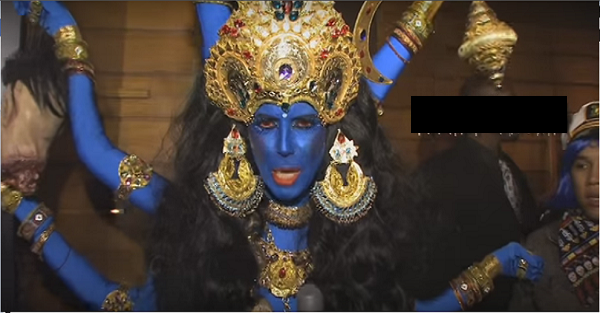सच्चाई: इस्कोन एक ईश्वरवादी संस्था हे | इनके मंदिरों में देश काल या जाती को आधार बनाकर भक्ति करना वर्ज्य हे| सभी भक्त सभी मंदिरों में जाते हैं और ज्ञान का लेन देन कर सकते हैं
Fact: ISKCON is non-sectarian in all respects, including nationality. It has temples all over the world managed and attended by local people of that region. Devotees often travel to different temples all over the world serving the deities, preaching and performing temple services as and when needed.
इस्कोन न्यू यॉर्क में एक छोटे से स्टोर की तरह शुरू हुआ था | तब से अब तक 11000 भक्त मंदिर के अन्दर और 980,000 मंदिर के बाहर, 350 से अधिक केंद्र , 60 ग्रामीण समुदाय और 55 रेस्तरां शामिल हैं|
It began in a small storefront in New York and has since developed into a worldwide confederation of over 11,000 temple devotees, 980,000 congregational devotees, and is comprised of more than 350 centers, 60 rural communities, and 55 restaurants worldwide.
Myth: ISKCON propagates a predominantly Hindu religion.
Fact: Hindu culture is vast, and the term encompasses numerous theologies, philosophies religious traditions and spiritual cultures. ISKCON propagates the timeless Vedic philosophy which is not limited to any religion. The concept of God consciousness, devotional service and associating with God by remembering His name, His pastimes and following His instructions is universally preached in all spiritual walks of life and is explained in the Vedas as the ‘sanatana dharma’, the basic duty of all living entities.
Myth: ISKCON is a new-wave religion
Fact: ISKCON belongs to the Brahma Sampradaya, emanating from Lord Brahma and is one of the four authorized Vaishnava sampradayas (the other three are the Sri or Lakshmi, Rudra and Kumara sampradayas). The founder acarya Srila Prabhupada belongs to an unbroken disciplic succession started by Sri Krishna through Lord Brahma and includes authorities like Narada Muni, Srila Vyasadeva, Sripada Madhavacarya and Caitanya Mahaprabhu.
Myth: ISKCON uses American wealth to fund its project over the world.
Fact: All temples in ISKCON are mostly self sufficient and rely on their local congregation, book distribution and festivals to sustain and expand.
Myth: ISKCON is very aggressive in its preaching.
Fact: Devotees are naturally very compassionate and eager to share their love of Godhead with others. The Vedic scriptures enjoin that there is no activity as holy as spreading the name and teachings of God. However they also respect the views, background and practices of different people at all times. ISKCON does see it as its mission to accept with open arms any sincere soul who declares a need for spiritual shelter and guidance. There is a definite missionary spirit in Vaishnavism and Hinduism, but its practice is not governed by an exclusionist conversion model. From a Gaudiya Vaishnava perspective, ISKCON works not at ‘conversion’ but spiritual development.
Myth: ISKCON has been altered to suit the westerners
Fact: ISKCON is based on the potency of disciplic succession. The original word is passed from spiritual master to disciple without any modifications. The philosophy, practices, principles and any apparent deviation have been clearly enunciated and authorized by the Vedic scriptures. ISKCON requires that all initiated devotees strictly follow the four regulative principles (no meat eating, no intoxication, no gambling, no illicit sex), chant at least sixteen round of Japa daily and seriously study, understand and assimilate the Vedic scriptures like Bhagavad Gita, Srimad Bhagavatam etc.
भारतीय सभ्यता का बढ़ता वर्चस्व ही कारण हे की निचे विडियो में एक जानी मानी अदाकारा माता काली के वेश में सामने अति हैं| इस्कोन ही एक बड़ा कारण हे की सारे विश्व में हिन्दू सभ्यता को मानव जीवन के लिए बचावकारी सभ्यता मन जा रहा हे
Myth: ISKCON has turned religion into a public show.
Fact: People are often bemused and some times angered by the public sankirtans performed by ISKCON. However the scriptures recommend sankirtan as the yuga dharma for the current age of Kali. The traditional ratha yatra held annually in Puri is a classic example of this. The Nagara Sankirtana (town chanting) movement inaugurated by Caitanya Mahaprabhu has been followed in India for centuries and spontaneously engages even unwilling people into devotional service by sravana (hearing) and kirtana (singing) the Lord’s name. However, these public displays are sustained by serious introspection, study of the scriptures. and hours of daily Japa meditation and deity worship.
